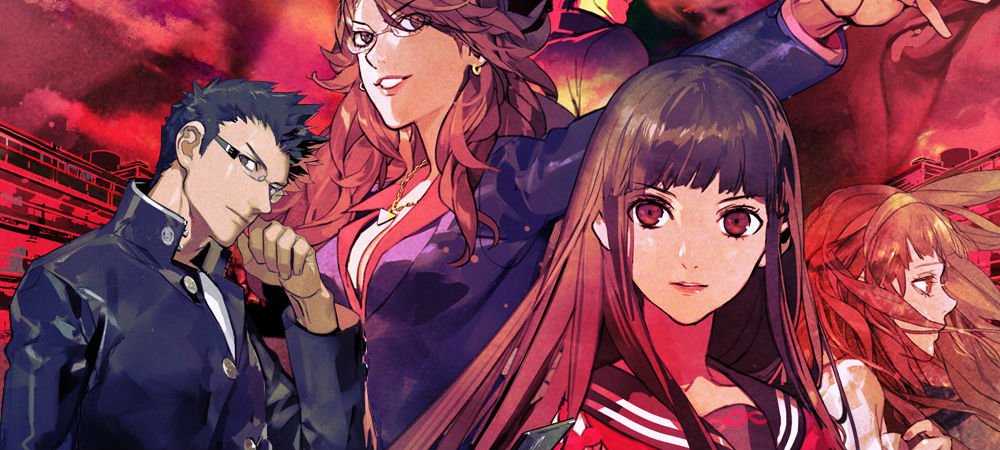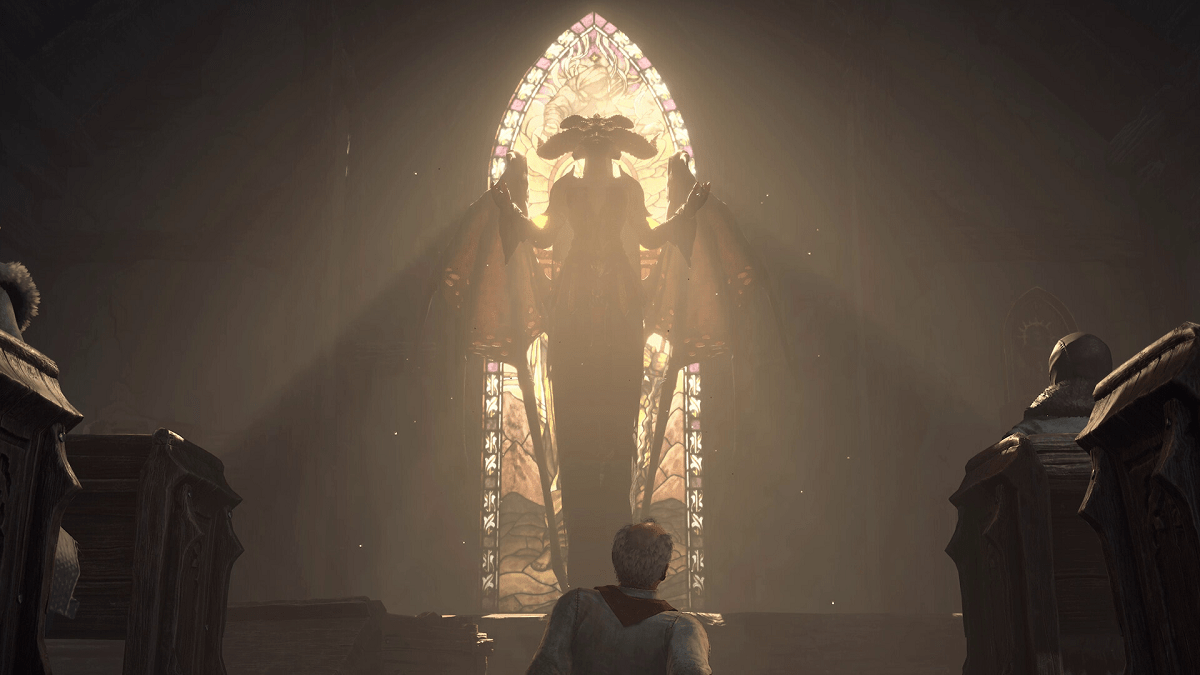More Vita goodness
Whenever the Vita’s library expands, I always get unreasonably excited. Double excited if there’s a new IP to add to the fold, because I’m seeing a lot of sequels these days. That’s why I was ecstatic to hear that Toybox Games’ Tokyo Twilight Ghost Hunters was making its way to the West via Aksys Games. While Toybox’s previous effort Hometown Story failed to engage me, Tokyo Twilight seemed as though it’d be a much more robust offering. As an intriguing amalgam of visual novel pageantry and strategic role-playing,
Tokyo Twilight Ghost Hunters succeeds on both a functional and aesthetic level, and though it can be quite challenging at times, it’s a welcome addition to any niche gamer’s library. It’s also a completely unique experience that’s worth taking the time out to understand, despite its initially frustrating veneer.

Tokyo Twilight Ghost Hunters (PS3, Vita [reviewed])
Developer: Toybox Inc.
Publisher: Aksys Games
Released: March 10, 2015
MSRP: $39.99
You’re the newest transfer student to have enrolled at Kurenai Academy, and as such the game wastes no time in getting you to provide your own personal information to give you the impression that the protagonist is little more than an imprint of you. From your height to your blood type, it’s all about fitting yourself into the player character, which ties into a decidedly different yet very refreshing branching dialogue system upon which a good portion of the game is built upon.
I’ll get to that later, but know that after you’ve customized your character properly, you’re embarking on a brand new career with a high school ghost-hunting establishment. After meeting up with a shy young woman named Sayuri Mifune and nondescript male student Masamune Shiga, you’re quickly whisked away to join the Gate Keepers, or Kurenai Academy’s version of, for all intents and purposes, a ghost-hunting club for after-school mischief.
The Gate Keepers meet in a stereotypically crowded club area daily to take on new clients, all of whom are being haunted in some way by wayward spirits who haven’t yet passed over to the other side. When you take on a new client, it’s as if you’re starting a new episode of an anime series, complete with its own opening credits and ending, which ends up lending a refreshing lilt to content that may otherwise feel alien in the visual novel-laden segments of the game.

You and your teammates tackle each assignment by delving into dungeon-styled arenas that conjure images of the classic Shin Megami Tensei games, where you’re essentially playing a modified strategic grid-based game of Go or Chess. After choosing the gear you’ll need to ward off specific ghosts (salt for keeping ghosts at bay and other equipment) you and your team are thrown into a grueling game of remote ghostbusting. Each chapter prefaces the capture of the ghost of the moment (think “magical girl” anime “demon of the week” format) with bit of story told in the typical static background, slightly animated character, and accompanying text style of visual novels. The characters themselves are given gorgeous, beautifully-detailed portraits that swap as they speak, despite how dry the script can be, and their accompanying environments are great-looking as well.
These segments take up a bulk of the game aside from “dungeon’ exploration, though I didn’t have enough for my tastes, especially given the wheel that allows you to interact with other NPCs. It pops up seemingly at random when you’re engaged in conversation with others, and contains two different tiers of options to select in order to respond to others. You can choose from a happy face, sad face, confused face, handshake, and an angry face.
It’s easy enough to decipher — this denotes the type of response you’re going to give on an emotional level. The second wheel corresponds to each of the five senses: eyes, nose, ears, hands, and mouth and the senses they represent, obviously. The game doesn’t do an excellent job of communicating to you what these wheels do, but it’s fairly simple to figure out. Where the game missteps is by serving up options and actions that don’t always correlate with the emotion you want.

For instance, if you wanted to be friendly you might choose a loving face and a hand to touch someone, right? The game might not see it that way. It may instead spawn a completely opposite reaction, which can alter your interactions with other characters in a very frustrating way. Perhaps I was going about it incorrectly, but after consulting the official video from Aksys Games that talked about it in length and referencing the manual, which did little to explain it, I realized I just needed to go with it. So I did, resulting in my character becoming some sort of bizarre lecher who used his tongue way more than I feel like he should have. Luckily, there’s a diverse and interesting cast of characters to spend time with, and much like the Persona series, each have their own strange little quirks. So you won’t have to feel so out of place when you use your hands or eyes in situations where you really shouldn’t.
The bulk of the game, however, isn’t driven by emotion or intent. It’s a cold, calculating exercise that’s both vexing and challenging at the same time. For each ghost you’re setting out to catch, you’re given a stipend for supplies, which you’ll purchase and set up before each episode. There’s a chess-like board upon which you’ll set up moves to attack and change positions, though all of the avatars on the board (viewed isometrically) will move at the same time. Most of the time, you’ll have no idea where the ghost is, so as the timer ticks down to nothing, you’re constantly forced to think about how to best push the ghost to you. Do you put down salt to ensure the ghost can’t escape a certain area? Do you push all of your teammate to corner it? What happens when you finally corner the ghost?
You get a good look at the ghost of course, as the action switches to first-person a la Shin Megami Tensei: Soul Hackers or games of that ilk, and you see your party landing hits and doing damage. Defeating the bigger boss ghost of each episode wraps up the chapter, and it’s done, done, onto the next one from there. It sounds very simple on paper, but it’s likely you won’t immediately understand any of this. There’s a tutorial section at the beginning of the dungeon sections that you can turn to, but after that you’re basically thrown to the wolves. I had to spend hours perfecting the system, and even after putting weeks into the game I’m still a little rusty. I learned the ins and outs and peculiarities of the system, but I still feel as though I could have done better. The game should have taken more pains to explain itself, especially since it’s such an alternative style of play.

But that’s what makes Tokyo Twilight Ghost Hunters so entertaining. It won’t hold your hand or force you through a million tutorials. There’s a hint of unpredictability that you just don’t get from most games anymore, even the niche titles, and that’s the main reason I pressed on even when I got frustrated. That’s also one of the reasons you’ll be spending plenty of time with the game, aside from the fact that there are several side missions, a board game in the hub area, and other surprises to engage you. There aren’t as many secret weapons or awesome-looking ghostbusting tools as I would have hoped for, but such is life.
Tokyo Twilight Ghost Hunters is certainly one of the most unique titles the Vita has seen or will see by far, and while it can take an astronomical amount of getting used to, it’s absolutely worth investing time in. What other game is going to let you bite someone’s nose in error when you meant to make a friendly gesture? I rest my case.





Published: May 9, 2015 12:00 pm